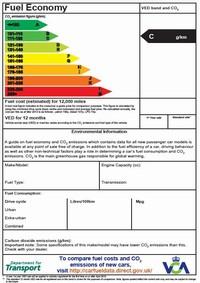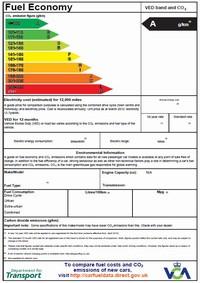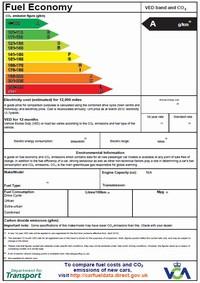MEMBER STATES >> AUTHORITIES GERMANY CYPRUS UK
|
SUBSECTIONS
|
|
UG1
|
Vehicle Plates
|
|
UG2
|
C02 Labelling
|
|
UG3
|
Tyre Labelling
|
SECTION: UG1
| Vehicle Plates |
| Plates (Manufacturers Plate/Body Builder Vehicle Plate/Body Identification Plate):Base Vehicle Manufacturer Plate:
Every base vehicle will have a manufacturers plate fitted detailing at least the following information:
- Name of the manufacturer,
- EC Type-Approval number,
- VIN,
- Maximum permitted laden mass of the vehicle,
- Maximum permitted laden mass of the combination if the vehicle is used for towing,
- Maximum permitted road mass for each axle, listed in order from front to rear,
- In the case of a semi-trailer, the maximum permitted mass on the fifth wheel king pin.
Body Builder Vehicle Plate:
Each body builder shall attach to each completed vehicle a 2nd or subsequent stage, manufacturers’ plate. This plate must be firmly attached, in a conspicuous and readily accessible position. It must be close to the base vehicle manufacturer’s plate on a part not subject to replacement in use. It must show clearly and indelibly the following information in the order listed:
- Name of the manufacturer,
- Sections 1, 3 and 4 of the IVA or NSSTA approval number,The stage of approval,
- Bodywork identification number,
- Body Builder’s VIN,
- Maximum permissible laden mass of the vehicle (*),
- Maximum permissible laden mass of the combination (where the vehicle is permitted to tow a trailer) (*),
- Maximum permissible mass on each axle, listed in order from front to rear (*),
- In the case of a semi-trailer or centre axle trailer, the maximum permitted mass on the coupling device (*).
(*) Only where the value has changed during the current stage of approval.
N.B. The minimum height of the characters used on the Body Builders vehicle plate is 4mm.
Each body builder shall develop a procedure describing the generation of vehicle plates:
This procedure shall include at least the following;
- Describe the manufacture of these plates (either in-house or external manufacture).
- The responsibility for the plates.
- The layout of the plates.
- Process for the correction of incorrect plates attached to a vehicle.
- Type of plate eg. for swap body (de-mountable superstructure) vehicles.
Bodywork Identification Plate:
In addition to the body builder’s vehicle plate, each body builder shall attach to the body, tank, crane etc., subject to the build, a plate identifying the bodywork. This plate must be firmly attached, in a conspicuous and readily accessible position on a part not subject to replacement in use.
This plate shall contain at least the following information;
- Name of manufacturer,
- Bodywork identification number,
- NSAI AVBB – body builder number.
N.B. The minimum height of the characters used on the Body Identification Plate is 4mm. |
SECTION: UG2
| C02 Labelling |
| Display Requirements:
The requirements for anyone displaying a car for sale or lease can be found in the legislation “The Passenger Car (Fuel consumption and CO2 Emissions Information) Regulations 2001”. These regulations were further amended by Statutory Instrument 2013 No 65, which took effect 11 February 2013. In particular:
- Regulation 3 extended the application of the Passenger Car (Fuel Consumption and CO2 Emissions Information) Regulations 2001 to vehicles that do not emit CO2, hydrocarbons or carbon monoxide;
- Regulation 5 reduced the minimum height of the mandatory text box (on the label) from 125mm to 80mm
Additionally, VCA have created some guidance notes on the display and advertising of fuel consumption: (version 7, last revised November 2014).
There are three main types of label available at this time. Clink on the link for details on the information given on the labels.
| 1.Label for conventional fuel cars |
2.Label for pure electric cars |
3.Label for plug-in electric cars |
 |
 |
 |
|
SECTION: UG3




